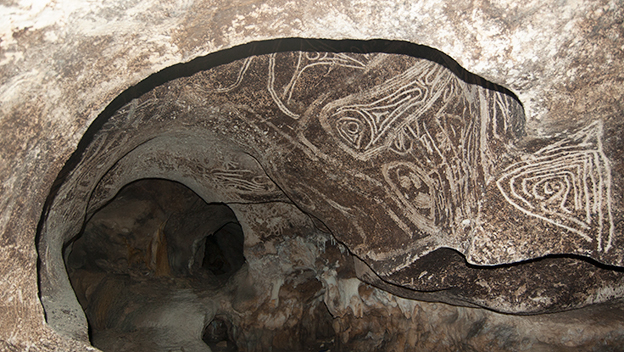
The website Repeating Islands, which covers Caribbean culture and art, reports that researches recently discovered “the largest concentration of indigenous pre-Columbian rock art in the Caribbean” on a remote and uninhabited island off the coast of Puerto Rico. Outlined in an academic paper entitled “Artists before Columbus: A multi-method characterization of the materials and practices of Caribbean cave art,” the discovery suggests that indigenous art was just as sophisticated and advanced as European art of the same period. Here’s an excerpt from the Repeating Islands report:
The paper presents the results of National Geographic funded fieldwork by an Anglo-Puerto Rican team, who uncovered extensive and undocumented rock art deep inside the islands labyrinthine cave systems. The paper presents the first results of the dating of the art, as well as insights into the artistic choices made about location, technique, and paint recipes of the time.
Dr Alice Samson, co-author of the paper from the University of Leicester School of Archaeology and Ancient History, explains: “Scientific analyses from the team have provided the first dates for rock art in the Caribbean — illustrating that these images are pre-Columbian made by artists exploring and experimenting deep underground.
“The conservation-minded approach we used squeezed every bit of information we could out of the discovery using multiple methods that are relevant to the studies of vulnerable rock art worldwide.”
Dr Jago Cooper said: “For the millions of indigenous peoples living in the Caribbean before European arrival, caves represented portals into a spiritual realm, and therefore these new discoveries of the artists at work within them captures the essence of their belief systems and the building blocks of their cultural identity.”
The team uncovered multiple rock art sites inside the caves with iconography consisting of human, animal, and meandering designs. Some are painted or drawn, and others, drawn with the fingers in the soft walls, are more elaborate and akin to a technique called finger-fluting familiar from Palaeolithic rock art in southern Europe
Image via Repeating Islands.